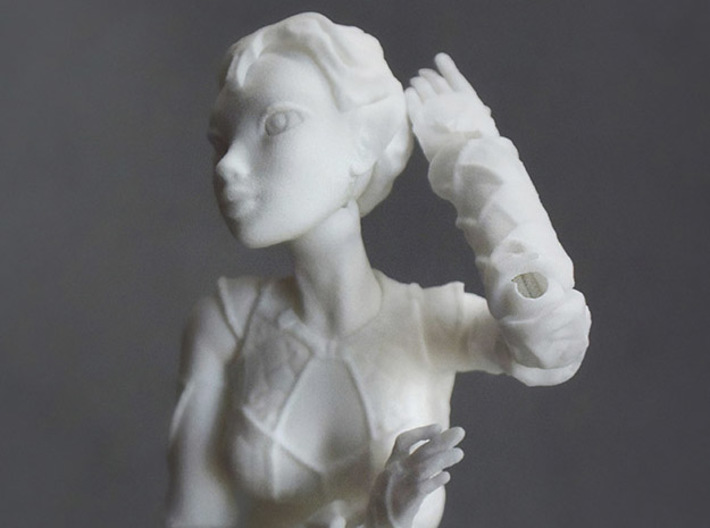
Shapeways designer Sonia Verdu hails from Madrid, Spain – and she embodies the creativity of the city she calls home. “I was born in a very creative and not too conventional-minded family,” Sonia told us, adding, “I think this helped me follow heart rather than my head.” Her Shapeways shop captures that spirit, with designs that run the gamut from an intricate star-shaped locket to a series of adorable phone stands to fully articulated doll and robot figurines. We talked with Sonia about how she got started, and what inspires her.
How did you learn to design in 3D?
I’ve always liked sculpting and painting, and although I did not see many career opportunities in the world of art, I decided to get a Bachelor of Arts at university and study Artistic Ceramics in an art school. I learned digital modeling in 3D mainly on my own. At university I learned only traditional techniques of painting and sculpting, as I considered it very important to have that base. Later, I worked as a designer, and since I was really interested in digital modeling, I started to watch tutorials on the internet and fell in love with Blender, a professional-grade, open source software. I’m still learning to model with this program and I think I still have a lot to learn.
What brought you to 3D printing with Shapeways? Who in the Shapeways community has served as an inspiration to you?
A friend, Gianluca Owen, an expert in 3D printing, suggested it. I listened to him and started to share my designs here. I think this is a fantastic website where you can find a huge number of interesting designs, and it’s a great source of inspiration – besides having the possibility to test different materials to print my designs.
In terms of who has served as an inspiration, well, this question is very difficult to answer because there are many designs that inspire me. Some of the designers are Brian Chan, Nervous System, and Rustylab.
Your smartphone holders are adorable. How did you come to that idea?
My idea was to create several mobile holders in the shape of animals, that were cute and childish and at the same time very simple.
What inspired the two tiny robots in your shop?
The idea of designing these robots came up after designing toys for my children. I wanted to create cute robots and, like the above mobile holders, with a childish appearance and rounded corners.
Lantea the Jointed Doll is incredibly well-designed. Was it a challenge having to keep assembly in mind when designing for that model?
Yes, Lantea was a great challenge for me and, although it took me a long time for the complexity of the assembly, it was a lot of fun. Besides, in every new design of a jointed doll I learn new things, and that encourages me to do more and more.
If you weren’t limited by current technologies, what would you want to make using 3D printing?
Since I left university, I’ve had in mind the idea of making sculptures and combining them with water, and I believe 3D printing could be a great tool for this project. I would like to make it come true someday.
We hope Sonia does realize her dream of multimedia 3D printed sculptures. We’ll make sure to share them when she does. Do you have a project you’d like us to showcase? Leave a comment below!






